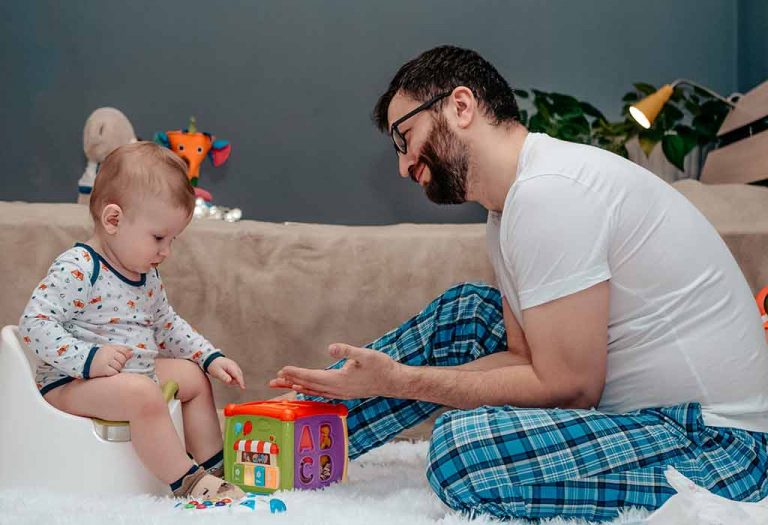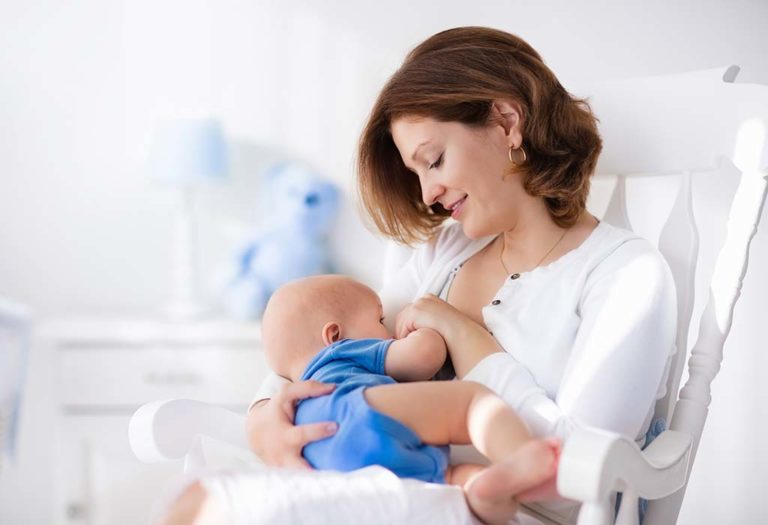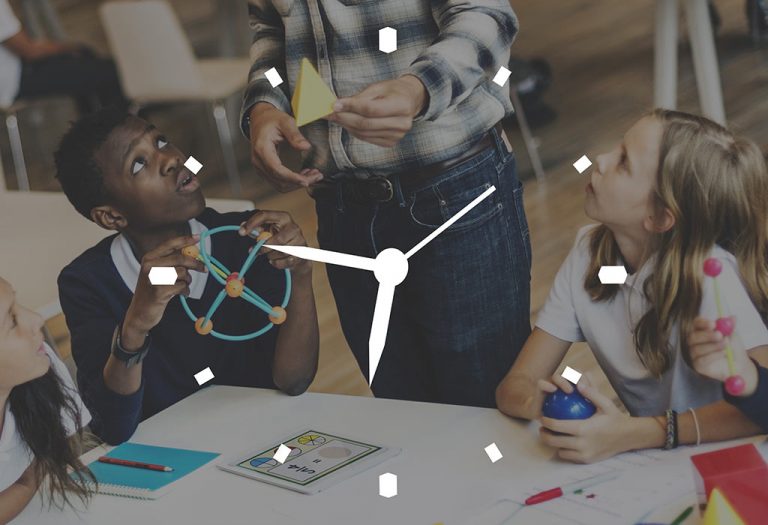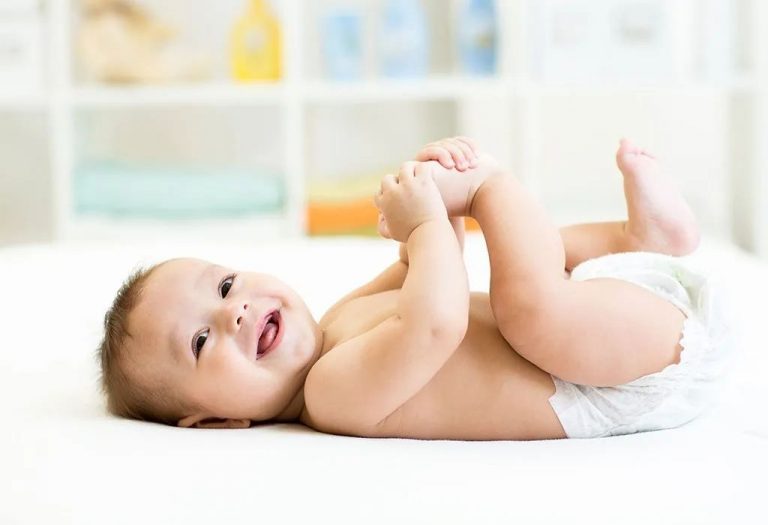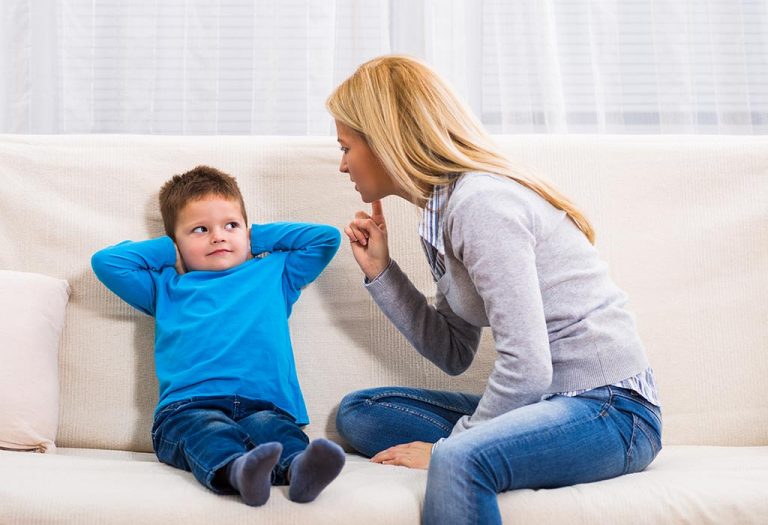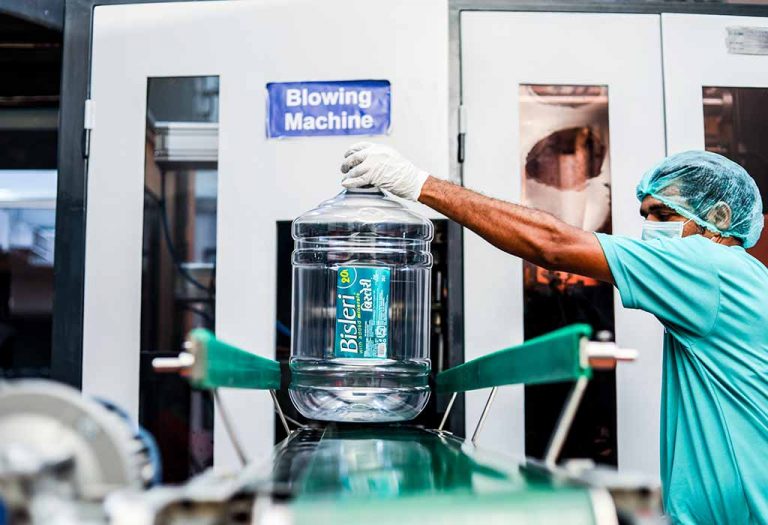Elimination Communication: Infant Potty Training
Pooping is a natural process. Babies dependent on diapers are unable to control their bodily functions until they are potty trained. Although babies can’t be potty trained at such an early stage, parents, on the other hand, can learn an early potty training method where they can learn the cues when their babies have to go. Ditching diapers with an infant’s toileting practice through cues is called baby elimination communication. That said, there is a difference between potty training and elimination communication (EC). To learn about the difference and how to train your baby to pee and poop without diapers, read on!
What Is Elimination Communication?
“I didn’t know you had to change diapers so often. I couldn’t believe it – we must change them 10 times a day.” Stanley Tucci
Babies poop and pee, and they do it at any time without warning. Diapers play a major part in the lives of newborns, infants, and toddlers until they are potty trained. An American child spends about 3 years in diapers until they learn to go to the toilet like a big baby.
However, in many developing, non-industrial countries and cultures across the world, babies have a diaper-free childhood or minimum dependence on disposable diapers. The babies and their caregivers develop communication, where the little one expresses his desire to poop, and the caregiver takes the child to a potty and holds it upright to eliminate. This helps the baby defecate in a natural way. This concept is called Elimination Communication or Natural Toilet Training (1).
Disposable diapers were invented in 1955; our grandparents’ generation was completely dependent upon natural potty training for their kids. Elimination communication for newborns is a pretty common concept. The earlier you start, the quicker you go diaper-free. Thus, timely stopping the use of disposable diapers and implementing early and appropriate elimination communication may lower the likelihood of disposable diaper dependence in children (2).
History of Elimination Communication
The concept of Elimination Communication is quite old and is certainly NOT a modern parenting gimmick. Ingrid Bauer, a popular author and philanthropist, introduced the phrase “elimination communication” in 2001. She authored a book called Diaper Free: The Gentle Wisdom of Natural Infant Hygiene. At that time, the practice of infant pottying was not a novel idea.
Various cultures around the globe have been employing natural infant hygiene as early as 1 to 3 months of age. In these cultures, diapers are not standard, either due to unavailability or because they don’t fit within their customs.
You might also be surprised to discover that just 3 or 4 generations ago, babies in the United States frequently used the potty during infancy. However, that changed after the invention of the disposable diaper in 1955.
Subsequently, a few years later, child development expert Dr. T. Berry Brazelton released guidelines for toilet training that suggested parents should wait until their children were between 2 and 3 years old to begin training.
How Is EC Different From Potty Training?
Elimination communication is different from potty training in many ways. Potty training is when your child is ready to stop wearing diapers and use the toilet independently, while elimination communication is when you actively take the baby to the toilet in response to their cues and promote a diaper-free childhood.
What Does the Elimination Communication Method Involve?
Elimination communication is a two-way channel, whereby the parent learns to pick cues of a baby’s need to answer the nature’s call, and the baby learns to pee or poop when a parent gives a signal. Elimination communication for toddlers is far easier as the baby is old enough to understand and express verbally. The kids who have undergone elimination communication perform better than their peers during potty training. Pay attention to these pointers in order to successfully implement elimination communication (3).
1. Timing
The human body works like a clock. There is a time for everything. Make a chart of the baby’s schedule or a few days. You will notice a pattern emerging. Some babies pass poop as soon as they wake up or before the nightcap, some might pee mid-feeding or pass poop a few minutes post-feed. Once you start understanding the baby’s schedule, you can take them to the potty around that time and hold them up for their business.
2. Signals
Elimination communication needs a lot of observation. You will notice that your baby will give you some form of signals just before they are ready to poop. There might be changes in facial expressions or a noticeable pause while playing; they become overly fussy or get colicky; some might pass wind or grunt with pressure. As soon as you notice the change, take the baby to the bucket.
3. Intuition
Intuition comes with parenting automatically. You will just know when the baby wants to play and when he wants to poop. Trust your inner voice and take the baby to the bowl.
4. Cues
Cues work the other way round. The parent will have to hold the baby over the pot and give him a cue, make a sound like ‘sssss’ when you want the baby to start the stream of urine, or hold the baby in a certain position when you want him to poop. Eventually, the baby will relate this as a cue to eliminate and learn to do his business when prompted.
How Does It Benefit the Baby and the Mommy?
There are a lot of advantages to elimination communication. Apart from being a natural way to eliminate, it is good for the environment. There will be fewer diapers making it to the landfills and less garbage that takes years to decompose. There are a lot of benefits for the babies and mommies practising EC.
1. Builds a Strong Bond
Elimination communication involves a lot of observation. The mother needs to understand the baby’s signals, and the baby needs to pick up the mother’s cues. This means a lot of time spent together.
2. Easy on the Wallet
Babies need 8-10 diapers a day until they turn 2 to 3 years old. This can be very expensive. Elimination communication reduces this expense and saves a lot of money.
3. No Diaper Rash
Babies have very sensitive skin. Continuous use of diapers can cause a rash on their soft tushies. Diaper-free time ensures rash-free skin and a happy baby.
4. Cleaner for Baby, Cleaner for Mommy
With minimal use of diapers, both mommy and baby have to deal with a lesser mess. The baby will not be sitting and moving around with soiled diapers, and mommy will not have to deal with the disposal of soiled diapers.
5. Comfortable for the Baby
The baby has a lot to learn in its developmental years. They will be crawling, sitting, and walking around. Wearing a diaper can be uncomfortable and heavy. Diaper-free childhood will offer them freedom and comfort at all times.
6. Easy Transition to the Toilet
The babies who have been trained with EC have a better understanding and control of their bodily functions. This makes the transition to the toilet easier.
At What Age Can You Start the EC Method of Potty Training?
The EC method can be started at a very early stage of infancy. Newborn and infant elimination communication is strongly recommended. Some parents prefer to wait for 3 to 6 months before they begin to practice EC. There might be many unsuccessful attempts before you succeed. Be patient and keep trying.
How to Get Started With Elimination Communication Potty Training?
You can begin with an understanding of EC by reading about it and speaking to parents who have successfully implemented this concept for their babies.
1. Start With Observation
Observation plays an important part in potty training using the elimination communication method; you have to pay undivided attention to the baby.
2. Introduce Cues
Your baby will learn to understand and associate elimination communication cues quickly. The sound you make or the way you hold is a hint that you and your baby will develop together.
3. Keep a Potty Handy
You can either take the baby to the potty or bring the potty to the baby. In the early days of EC training, it would be wiser to keep a baby potty handy and accessible.
4. Carry Your Baby
Holding the baby or carrying him close in a sling can help you understand the baby better. The baby will start showing discomfort and become fussy when he wants to eliminate.
Things to Keep Handy for Elimination Communication Training
Here are some essential pointers to keep in mind when giving your baby elimination communication training:
1. Baby Potty
A baby potty will come in handy when you want to practice EC. You can also opt for an old container, a bedpan, or a bucket. A pot that looks like a toilet is recommended as the baby can relate to it during potty training at a later stage.
2. Leg Warmers
You need not keep the baby exposed for a long time. The baby can wear leg warmers and a cloth nappy. Open the nappy while the legs remain covered and warm during EC training.
3. Potty-Friendly clothing
Crotchless pants and clothes that can be removed quickly and easily, as soon as the baby signals, are required for efficient EC training.
4. Journal
You will have to record a lot of details in the initial days to understand the baby’s body clock. Keep a journal and a pen handy to make quick notes.
5. Tote or Baby Bag
When travelling, you will have to carry a lot of things with you. A large tote is required to keep everything handy – the potty, diapers, tissues, an extra set of clothes, and more.
6. Backup Diapers
A few extra diapers as a backup are always recommended. There might be times when you have no other option than to put the baby in diapers. A change of diet, a trip to the supermarket, are situations when the EC will have to wait.
Drawbacks of the EC Method
Besides several advantages, there are some things that you might want to consider before including this training method in your lifestyle.
1. Time-Consuming
EC is a time-consuming process. It involves a lot of observation and time with the baby. You have to catch every signal and be around to take the baby to the potty. There may be wrong signals at times, and you will return without success. It needs a stronger commitment and a lot of patience with the baby.
2. Inconvenient When Travelling
EC is best practised in the comfort of your home. In case you are out shopping or on a trip, it may get difficult to get the baby to the potty on time. The baby might not feel comfortable with passing stool in an unfamiliar environment.
3. Messy
EC can get messy. You will need time to understand the cues given by the baby during the diaper-free time. An accident may happen en route to the pot.
4. Social Acceptance
Since a lot of parents around you will be dependent on diapers, you may feel isolated at times. There will be apprehensions from people while lifting the baby. You will be facing a lot of queries and weird reactions. Remain calm and strong. At the end of the day, you have to decide what is right for you and the baby.
Do You Need to Buy Any Diapers While Practising EC?
Elimination Communication can be done part-time or practised full-time. Some parents would prefer that the baby sleep through the night with diapers and continue the EC toilet training during the day. As mentioned earlier, it may be difficult to continue practising EC when travelling. Diapers will still be required. However, the quantity will reduce drastically.
FAQ
1. Will I need any diapers while using elimination communication training?
That all depends. If you are planning on full-time potty training, elimination communication, including at night, then you may not need diapers. On the other hand, you can choose to keep diapers as backup or to EC part-time (while baby is at home, for example) and use diapers when travelling or at daycare. If you choose to use diapers, using cloth can help the baby stay aware of when he has eliminated because cloth doesn’t wick wetness away like disposables.
Practising elimination communication will require a lot of commitment and patience from both the caregiver and the baby. There may be accidents and messes to deal with in the initial days. But in the long run, it will be beneficial and rewarding. Approach the situation with a calm mind and enjoy the time bonding with your baby.
References/Resources:
1. Pediatrics – Elimination Communication: Diaper-Free in America
Also Read:
How Many Diapers you Need
Must-Have Items for Potty Training
What is the Best Age for Potty Training Your Kid
Common Toilet Training Problems in Young Kids
Was This Article Helpful?
Parenting is a huge responsibility, for you as a caregiver, but also for us as a parenting content platform. We understand that and take our responsibility of creating credible content seriously. FirstCry Parenting articles are written and published only after extensive research using factually sound references to deliver quality content that is accurate, validated by experts, and completely reliable. To understand how we go about creating content that is credible, read our editorial policy here.





